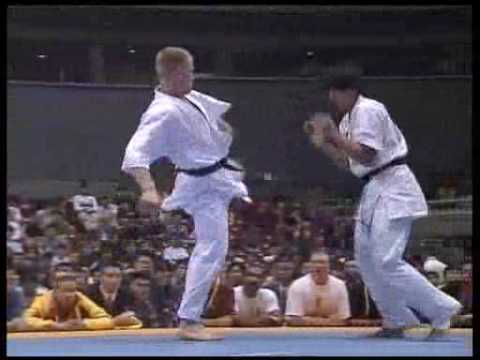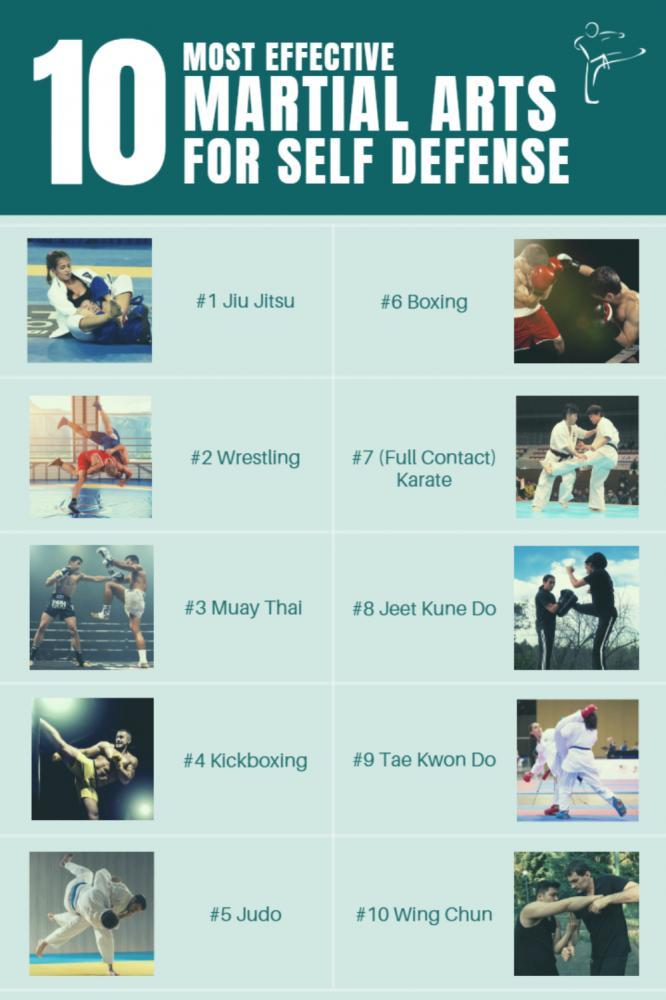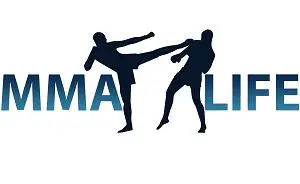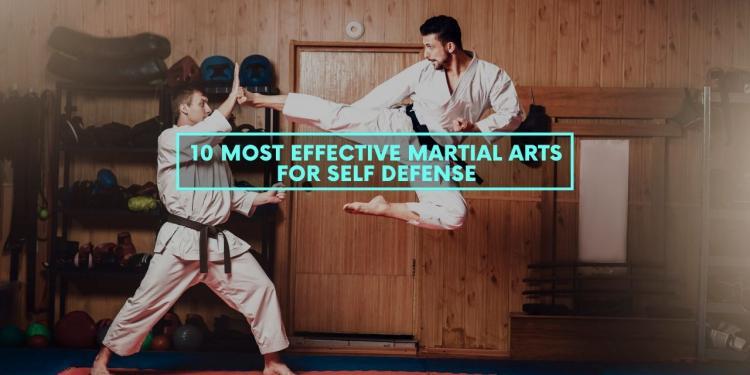There is no easy way to put this but there are a lot of bullshit martial arts out there. It’s sad to see people waste 20 years on a martial art only to get beaten up by someone with no training. It happens a lot. It is a waste of time. But with that said, there are many martial arts that will adequately prepare you to defend yourself when the occasion arises. We here at MMA Life compiled a list of the 10 best martial arts to learn for self defense in the streets. So if you are going to learn a martial art, learn one of these 10.
Note: Sambo is an extremely effective martial art. It is a mix of judo and jiu jitsu. However, it is not listed on this list because it is extremely hard to find a Sambo school outside of Russia and the former Soviet countries.
10) Wing Chun
Wing Chun is a Chinese martial art with specialization in close-range combat and made popular by Yip Man /Ip Man. The system emphasizes close-range rapid attacks in succession and places heavy emphasis on hand trapping. Because it is a “southern style” Chinese martial art, Wing Chun places heavy emphasis on fist and palm strikes, as opposed to “northern style” Chinese martial arts, which emphasize kicking more. Wing Chun practitioners can often been seen practicing on wooden dummies to improve their skills. I took some Wing Chun in my early 20s and currently use some of the hand trapping techniques in sparring. Some of the techniques are definitely effective. The problem I foresee with Wing Chun in a street fight is that the system places too much emphasis on linear movement. Linear movement in a street fight can actually be a hindrance because your opponent will most likely also fight linearly—thereby making it a fight of attrition and giving your opponent a puncher’s chance.
9) Tae Kwon Do

Tae kwon do (TKD) is a martial arts that with heavy concentration on kicks. Although there are a lot of flaws in sports TKD, an experience practitioner will have the leg dexterity to land quick kicks against an assailant. But there are drawbacks—the high flying kicks seen in TKD can be extremely dangerous in the streets, especially if someone were to face a wrestler who can disturb your base and take you down.
The sport aspect of the TKD has made it a little less practical for a street fight. In sports TKD, punches are rarely (if ever) thrown and kicks below the waist are not allowed. Therefore, it has created an incentive system that relies too much on feints and fancy kicks, and not enough on practicality.
8) Jeet Kune Do
Jeet Kune Do (JKD) is a martial that was created by the infamous Bruce Lee. Jeet Kune Do was created with realism in mind and was fueled partially by Bruce Lee’s early childhood in which he had many fights in the streets of Hong Kong. JKD emphasizes fighting without preconceived forms or patterns that is so imminent in most traditional martial arts. Rather, JKD has a set of guiding principles in which to guide its practitioner. This martial arts emphasizes a nimble yet bladed stance with a lot of side kicks. Bruce Lee also adopted many techniques from boxing, including the roll and forearm blocks. JKD emphasizes practical strikes, low hard-to-block kicks, and efficient use of energy—thereby making it a good martial art to learn to protect yourself in a street fight.
7) (Full Contact) Karate

Karate is the native martial art system of Japan. And while karate is one system of martial art, there are a lot of branches of karate. Some branches are more useful than others for street self defense. Many karate schools are washed down McDojos that will not allow you to spar and will not teach you anything worthwhile to defend yourself. Stay away from these schools. Instead, if you want to learn karate, go to a school that spars often. Preferably, a full contact karate school. Again, I cannot emphasize enough the importance of sparring, especially full contact and hard sparring. Although you should not spar hard all the time, you should experience what it is like to fight realistically. Many traditional martial arts schools don’t spar enough. Stay away from any school that doesn’t let you spar often.
Read Next: The Number One Martial Art for Women’s Self Defense
6) Boxing
Boxing is one of the most popular martial arts in the world. It is a martial art which holly focuses on hand dexterity. Boxing consists of four punches—the jab, the cross, the hook, and the uppercut. But from those four punches you can develop many dangerous variations. If you learn boxing, you will learn how to evenly distribute your weight, how to move your feet, how to move your head, how to avoid punches, and how to punch properly. All these things will give you a huge advantage in a street fight. Once you get really good at boxing, you will be able to develop “knockout power” that can knock your opponent out with just one punch.
The only thing that I do not like about boxing in a street fight is that you are also standing in punching range of your opponent, thereby also giving your opponent a “puncher’s chance” of knocking you out. Additionally, boxers often fight with big gloves, especially those who do not box competitively. So when fighting in the streets, you will find that punches from your opponents may graze or land just because they do not have big 16 oz gloves on.
5) Judo
Judo, the parent of jiu jitsu is also another great martial art system. Although the focus of sports judo has changed quite a bit and strayed from judo’s core philosophy, the martial art remains very dangerous. Some of their throws are violent and can be a game-ender, especially on hard concrete in the streets. Unlike wrestling, judo throws and trips do require a lot of practice and technique to be able to execute properly. But a season judoka (judo practitioner) will have great balance and hand-eye coordination, and be able to execute deadly throws.
4) Kickboxing
Kickboxing incorporates a lot of martial arts and it’s more of a sport than a style of martial arts. However, for the sake of this article, let’s call it a martial art. And it’s a martial art that is taught in many MMA schools. In kickboxing you learn to fight with both your hands and feet. And while kickboxers may have stylistic preferences as to whether they want to predominantly kick or punch in a fight—kickboxers are capable of doing both.
However, because kickboxer spend their time learning both the kicking and punching aspect of fighting, they don’t develop the leg dexterity of karate or tae kwon do practitioners, nor do they develop the fluid upper body movement and hand dexterity of boxers.
In a street fight, I would rather know kickboxing rather than just boxing. Kickboxing is a huge advantage in a street fight as it gives you skills that most people do not possess. It’s somewhat rare to get into a fight with a boxer. It’s even more rare to meet someone that can kickbox. Kickboxing also allows you to stay out of punching range but still be able to strike by using your legs.
3) Muay Thai
The “art of eight limbs” is making quite a resurgence as of late. This martial arts teaches the effective use of kicks, punches, elbows, and knees—thereby consisting of 8 limbs. No matter what you think of the style, there is no doubt that it is one of the most complete striking arts out there. An experienced muay thai practitioner will know how to effectively strike down an opponent with ease using any of the “eight limbs.”
2) Wrestling
When it comes to getting prepared in terms of physical conditioning, aggression, and takedowns, nothing will prepare you more than wrestling. Wrestling is the martial art of taking someone down and maintaining positional control on the ground once you take them down. Although amateur wrestling does not entail submissions (joint locks and chokes), taking someone down and then maintaining top control is often enough for the purpose of self defense. Someone with a year of high school wrestling experience should have no problem with fighting someone who doesn’t know any martial arts. Maintaining top control after maintaining a simple body lock or a single leg/double takedown will often be enough to end a fight in the street.
1) Jiu Jitsu
If a wrestler is dangerous, a wrestler that trains jiu jitsu is deadly. Although the art of jiu jitsu doesn’t concentrate on the takedown aspect of grappling as much, it is a very dangerous art once the fight is actually taken to the ground. Jiu jitsu practitioners are very good at maintaining control on the ground and finishing their opponents via submissions. Someone with one year of regular training in jiu jitsu can be confident that they will not lose a street fight to someone who doesn’t train martial arts.
However, there is a caveat—jiu jitsu practitioners are notorious for not being able to take their opponents down because most schools spar starting on their knees or don’t concentrate enough on the takedown portion of the art. So if you are going to learn jiu jitsu, make sure that your takedown game is strong. Otherwise, you won’t be able to take your opponent down on the ground to work your jiu jitsu.
Additionally, it is helpful to know a little bit of a striking art because there will be times when ground fighting is not ideal—like when you are fighting against multiple opponents.
So there you have it, the 10 best martial arts to learn for street self defense. If you are a woman, check out our article on the absolute best martial art to learn for women’s self defense.














